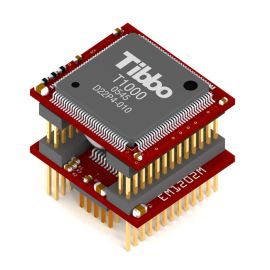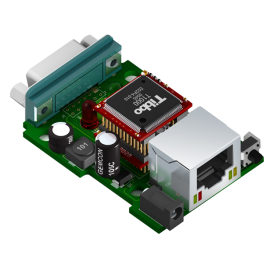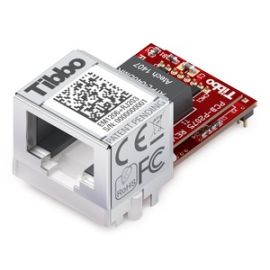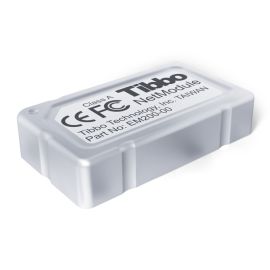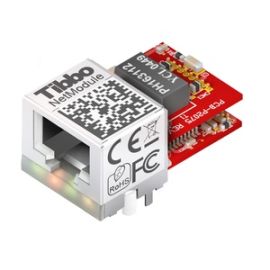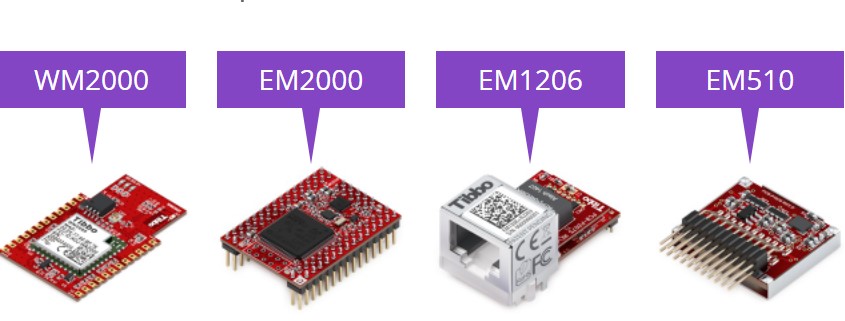
Tibbo programmable Internet of Things (IoT) modules are highly integrated, compact embedded devices with integrated Ethernet or Wi-Fi that serve as the foundation of your hardware solutions.
Programmable in Tibbo BASIC and Tibbo C, and supported by Tibbo IDE (TIDE), these embedded modules dramatically shorten the development time required to complete sophisticated IoT, Industrial Internet of Things (IIoT), and automation projects.
Tibbo's IoT module lineup includes the WM2000 featuring an integrated Wi-Fi interface, our flagship EM2000 embedded device with a large number of I/Os, the highly integrated RJ203+EM1206 combination providing an onboard RJ45 jack and magnetic, and the miniature and economically priced EM510 for lightweight and price-sensitive applications.
Comparison table
|
WM2000
|
EM2000
|
EM1206
|
EM510
|
|
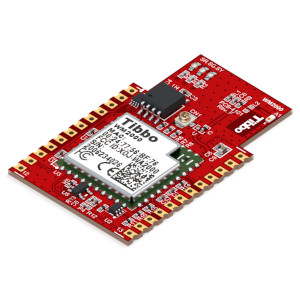 |
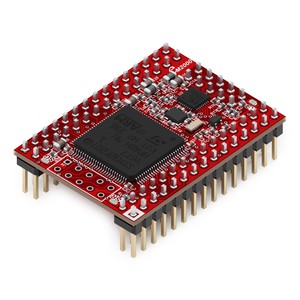 |
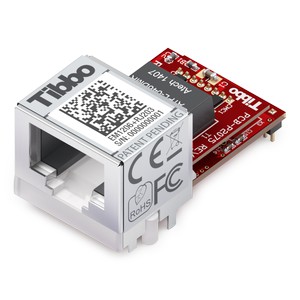 |
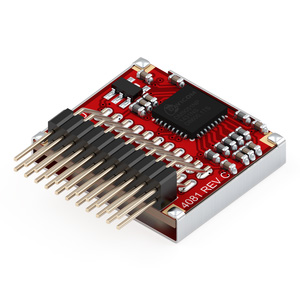 |
|
|
|
High-performance (ARM architecture) |
Baseline (T1000 architecture) |
Mid-range (ARM architecture) |
|
|
|
N/A | 10/100 Base-T, no RJ45/magnetics |
10/100 Base-T (RJ45/magnetics on the RJ203) |
10/100 Base-T, no RJ45/magnetics |
|
|
Integrated |
With the WA2000 add-on |
With the WA2000 add-on |
|
|
|
Integrated |
With the WA2000 add-on |
N/A |
With the WA2000 add-on |
|
|
With a 4G/LTE modem (connected externally) |
N/A | ||
|
|
Two serial ports (full/half-duplex UART, Wiegand, clock/data) |
Four serial ports (full/half-duplex UART, Wiegand, clock/data) |
One serial port (full/half-duplex, Wiegand, clock/data) |
|
|
|
10 | 56 | 17 | 10 |
|
|
Can drive an externally connected buzzer | N/A | ||
|
|
Four synchronous serial ports with SPI and I²C modes | |||
|
|
9 channels |
N/A |
||
|
|
N/A | Supports an externally connected TFT LCD | Supports externally connected LCDs and OLEDs (we offer drivers for several popular display controllers) |
N/A |
|
|
Supports external matrix and binary output keypads (of up to 64 keys) |
N/A | ||
|
|
Onboard RTC (must be connected to battery or main 3.3V power) |
Onboard RTC (backup supercapacitor must be connected externally) |
N/A | |
|
|
4MB for TiOS and application code + 4MB for the hardened, fault-tolerant file system | 1MB for TiOS and application code + 1MB for the hardened, fault-tolerant file system | 1MB for TiOS, application code, and the hardened, fault-tolerant file system |
512K for TiOS and application code, support for external 1MB flash disk |
|
|
2048 bytes | |||
|
|
3.3V | 3.3V (5V-tolerant GPIO lines) | 3.3V | |
|
|
Over BLE and Wi-Fi; |
With the WA2000 add-on |
N/A |
With the WA2000 add-on |
WM2000 Programmable Wireless IIoT Module
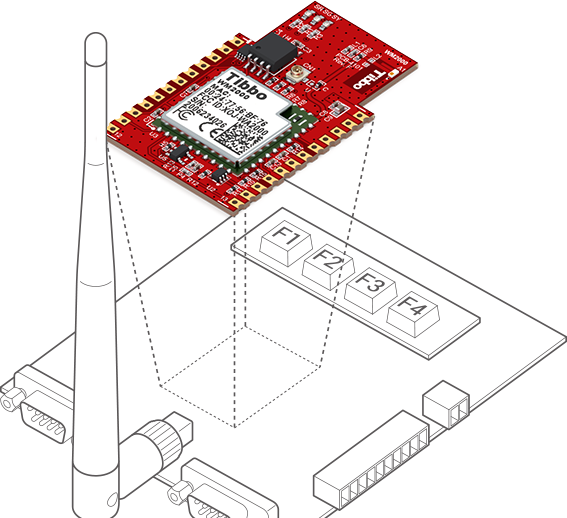
The WM2000 is the first programmable wireless Industrial IoT (IIoT) module offered by Tibbo. The device incorporates Wi-Fi and Bluetooth Low Energy (BLE) interfaces that introduce several new features, such as over-the-air (OTA) updates and TLS support.
The WM2000's hardware incorporates two high-speed serial ports. It also features software I²C/SPI ports, onboard flash and EEPROM, a real-time clock, and ten GPIO lines — two of which work as external interrupts. Nine lines can be configured to provide pulse-width modulation (PWM) output.
The WM2000 is the first Tibbo device that can store up to two compiled Tibbo BASIC/C binaries (only one can run at any given time). All our earlier products store a single app that can take up all of the flash space not occupied by system files and TiOS. The WM2000 — which has at least four times the flash storage of any predecessor — allows you to store the second app in the space left over from the first one.
The WM2000 also features a significantly revamped Wi-Fi API facilitating automatic association with a designated wireless network. This makes the module's Wi-Fi interface as easy to use as the Ethernet port on "wired-first" Tibbo devices, and also enables wireless debugging of your Tibbo BASIC/C code.

EM2000 Programmable IoT Module
The EM2000 is a full-featured Tibbo BASIC/C-programmable IoT Module with four UARTs and Ethernet, as well as optional Wi-Fi*, BLE* (Bluetooth Low-Energy), and 4G/LTE** connectivity. The module offers substantial speed and functionality improvements over its predecessor — the original EM1000 device.
The device's capabilities are further enhanced by the onboard flash memory hosting a hardened fault-tolerant file system, as well as the EEPROM and RTC.
The EM2000 has 56 general-purpose I/O lines and can control an externally attached LCD, keypad, buzzer, card readers, serial devices, and other circuitry.
Device pins have the standard 2.54mm (100mil) pitch. This makes the module ideal for use not only in production devices but also for prototyping.
* Requires the WA2000 add-on, which can be connected externally or piggybacked on top of the EM2000.
** Requires a standard 4G/LTE modem (i.e., Simcom's SIM7500) to be connected to a UART of the EM2000.

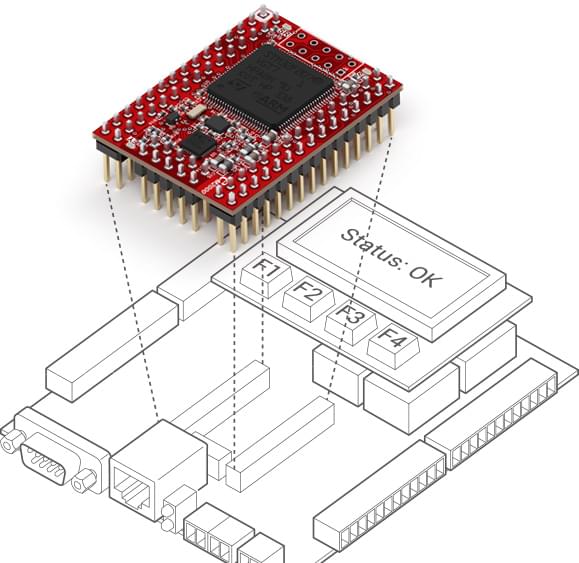
EM1206 Programmable IoT Module
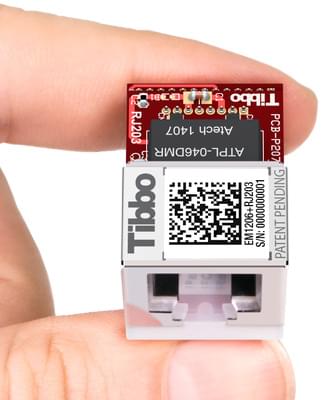
The EM1206 is a compact Tibbo BASIC/C-programmable IoT Module with Ethernet, as well as optional Wi-Fi* and 4G/LTE** connectivity. The EM1206 has four UARTs.
In combination with the RJ203 jack/magnetics front-end (shown), the EM1206 forms a complete programmable Ethernet node occupying only 34.4 x 20mm (1.35 x 0.79") of the host board's space.
The module's potent hardware mix, which also includes the onboard flash memory hosting a hardened fault-tolerant file system, as well as the EEPROM and RTC, has been carefully tailored to address the typical needs of network-enabled control applications. Thus, the EM1206 is especially suitable for "connected" edge products such as sensors, data collectors, meters, and actuators.
* Requires the WA2000 Wi-Fi add-on to be connected externally.
** Requires a standard 4G/LTE modem (i.e., Simcom's SIM7500) to be connected to a UART of the EM1206.
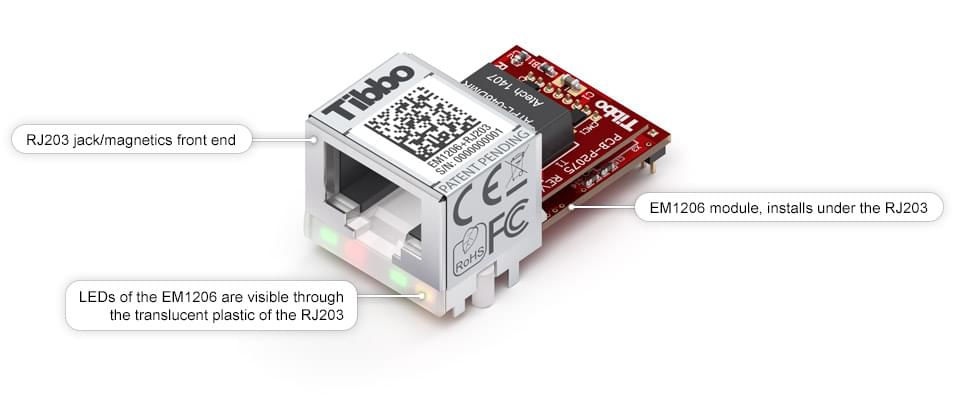
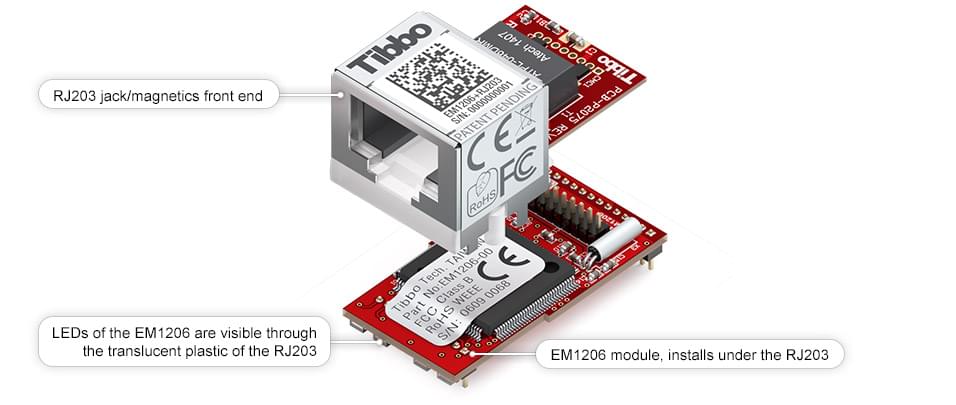

EM510 "MiniMo®" programmable IoT Module
The EM510 is an ultra-compact Tibbo BASIC/C-programmable IoT Module with Ethernet and optional Wi-Fi/BLE* (Bluetooth Low Energy) connectivity. The EM510 has one UART.
MiniMo targets price-sensitive applications such as the remote control of relays, home automation, sensor data collection, and metering.
* Requires the WA2000 Wi-Fi/BLE add-on to be connected externally.
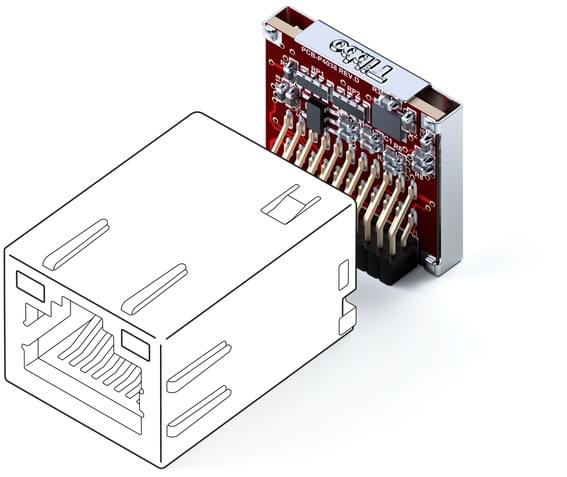
 Stands up, stands out
Stands up, stands out
Designed to be mounted vertically and fit behind a standard RJ45 jack, the EM510 reduces the required board space to a minuscule 18.5 x 6.5mm (0.73 x 0.25").
The width and height of the EM510 are very close to those of a standard RJ45 jack.
 All of the essentials, none of the excess
All of the essentials, none of the excess
The EM510 has all the features you need to build a tiny IoT device: an Ethernet port, one UART, 10 I/O lines, a small EEPROM, and 512KB flash for TiOS and your Tibbo BASIC/C application.
Need extras like a flash disk, RTC, Wi-Fi, or BLE? Add them externally!
 An Enlightening Idea
An Enlightening Idea
How many LEDs does a typical RJ jack have? Two. How many LEDs Tibbo modules usually require? At least three — red and green status LEDs, plus one yellow Ethernet link LED.
Minimalist to the end, MiniMo devices make do with just two LEDs of a standard RJ45 jack: device states are displayed using flashing patterns, while LED brightness indicates the Ethernet link state. This is a patented feature available exclusively on our MiniMo line of products.

Serial-over-IP (SoI) on Tibbo IoT Modules
Controlling a device over the IP network using a serial-to-IP converter (a.k.a. "device server," "serial-to-Ethernet converter") remains one of the most popular ways of network-enabling existing products.
Our programmable IoT modules can run a ready-to-use serial-over-IP (SoI) application. This application is written in Tibbo BASIC and is open-source. Upload the app onto a module, configure the settings, and you have a time-tested IoT gateway — no coding required.
Another possibility is to use our SoI application as the basis for your project. Take it and modify it in any way you please!













